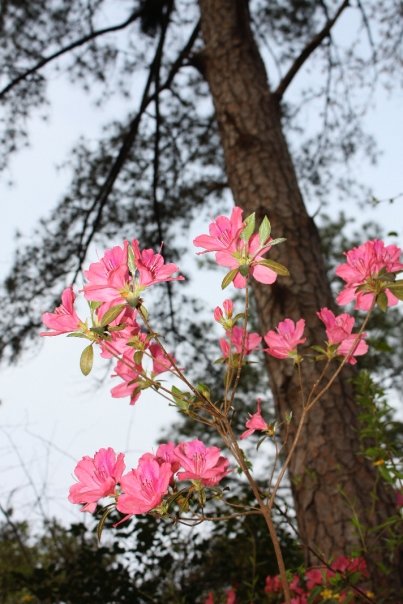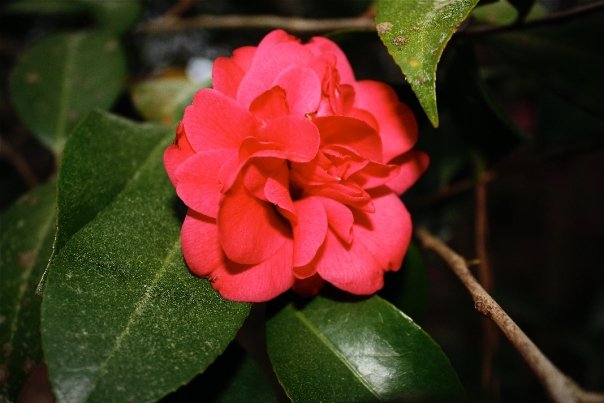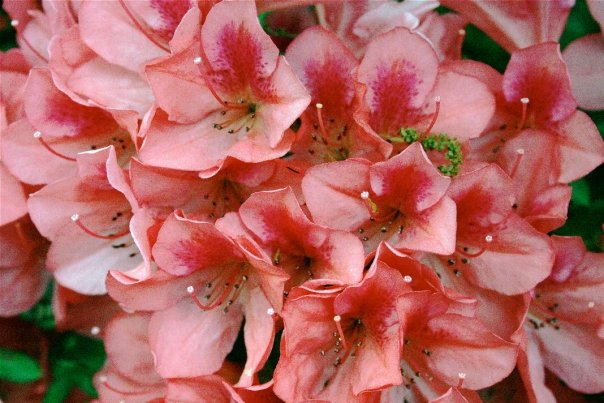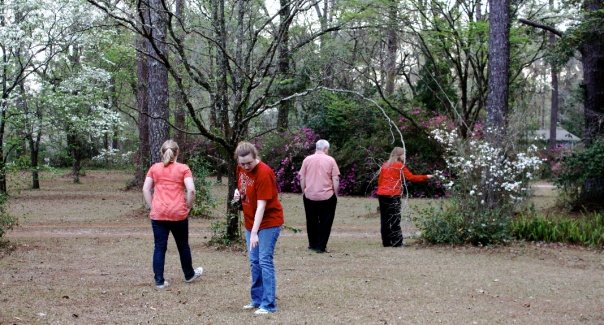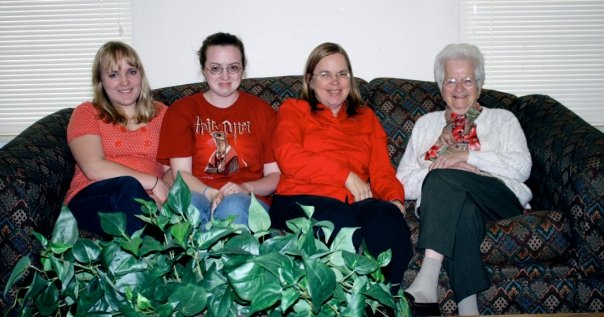 This came in an e-mail from my astute brother-in-law Gil. I assume it has traversed the globe many times, but I'll share it none-the-less. No multiple choice here, huh? These kids had to think. Of course, one had to have some aptitude to get to eighth grade in 1895.What it took to get an 8th grade education in 1895...
This came in an e-mail from my astute brother-in-law Gil. I assume it has traversed the globe many times, but I'll share it none-the-less. No multiple choice here, huh? These kids had to think. Of course, one had to have some aptitude to get to eighth grade in 1895.What it took to get an 8th grade education in 1895...Remember when grandparents and great-grandparents stated that they only had an 8th grade education? Well, check this out. Could any of us have passed the 8th grade in 1895?
This is the eighth-grade final exam from 1895 in Salina , Kansas , USA . It was taken from the original document on file at the Smokey Valley Genealogical Society and Library in Salina , and reprinted by the Salina Journal.
8th Grade Final Exam: Salina , KS - 1895
Grammar (Time, one hour)1. Give nine rules for the use of capital letters.
2. Name the parts of speech and define those that have no modifications.
3. Define verse, stanza and paragraph
4. What are the principal parts of a verb? Give principal parts of 'lie,''play,' and 'run.'
5. Define case; illustrate each case.
6 What is punctuation? Give rules for principal marks of punctuation.
7 - 10. Write a composition of about 150 words and show therein that you understand the practical use of the rules of grammar.
Arithmetic (Time,1 hour 15 minutes)1. Name and define the Fundamental Rules of Arithmetic.
2. A wagon box is 2 ft. Deep, 10 feet long, and 3 ft. Wide. How many bushels of wheat will it hold?
3. If a load of wheat weighs 3,942 lbs., what is it worth at 50cts/bushel, deducting 1,050 lbs. For tare?
4. District No 33 has a valuation of $35,000. What is the necessary levy to carry on a school seven months at $50 per month, and have $104 for incidentals?
5. Find the cost of 6,720 lbs. Coal at $6.00 per ton.
6. Find the interest of $512.60 for 8 months and 18 days at 7 percent.
7. What is the cost of 40 boards 12 inches wide and 16 ft.. Long at $20 per metre?
8. Find bank discount on $300 for 90 days (no grace) at 10 percent.
9. What is the cost of a square farm at $15 per acre, the distance of which is 640 rods?
10. Write a Ban k Check, a Promissory Note, and a Receipt
U.S. History (Time, 45 minutes)1. Give the epochs into which U.S. History is divided
2. Give an account of the discovery of America by Columbus
3. Relate the causes and results of the Revolutionary War.
4. Show the territorial growth of the United States
5. Tell what you can of the history of Kansas
6. Describe three of the most prominent battles of the Rebellion.
7. Who were the following: Morse, Whitney, Fulton , Bell , Lincoln , Penn, and Howe?
8. Name events connected with the following dates: 1607, 1620, 1800, 1849, 1865.
Orthography (Time, one hour) 1. What is meant by the following: alphabet, phonetic, orthography, etymology, syllabication
2. What are elementary sounds? How classified?
3. What are the following, and give examples of each: trigraph, subvocals, diphthong, cognate letters, linguals
4. Give four substitutes for caret 'u.'
5. Give two rules for spelling words with final 'e.' Name two exceptions under each rule.
6. Give two uses of silent letters in spelling. Illustrate each.
7. Define the following prefixes and use in connection with a word: bi, dis-mis, pre, semi, post, non, inter, mono, sup.
8. Mark diacritically and divide into syllables the following, and name the sign that indicates the sound: card, ball, mercy, sir, odd, cell, rise, blood, fare, last.
9. Use the following correctly in sentences: cite, site, sight, fane, f ain, feign, vane , vain, vein, raze, raise, rays.
10. Write 10 words frequently mispronounced and indicate pronunciation by use of diacritical marks and by syllabication.
Geography (Time, one hour)
1 What is climate? Upon what does climate depend?
2. How do you account for the extremes of climate in Kansas ?
3. Of what use are rivers? Of what use is the ocean?
4. Describe the mountains of North America
5. Name and describe the following: Monrovia , Odessa , Denver , Manitoba , Hecla , Yukon , St. Helena, Juan Fernandez, Aspinwall and Orinoco
6. Name and locate the principal trade centers of the U.S. Name all the republics of Europe and give the capital of each.
8. Why is the Atlantic Coast colder than the Pacific in the same latitude?
9. Describe the process by which the water of the ocean returns to the sources of rivers.
10. Describe the movements of the earth. Give the inclination of the earth.
The exam took 5 hours to complete."He had only an 8 grade education," you say? I tip my hat to him.I'll put my score up against my current readers, but not against those eighth graders. What would your score be?
 I tagged along with the real botanists on Sunday for what I thought would be a two hour climb along the bluffs of the Oosatanuala just north of Rome off Bell's Ferry Road. It turned out to last over twice that long, and I was pretty hungry by the time I got home. But as you can see from the pics, we are blessed to live in an area with an amazing variety of plant life.
Location: Whitmore's Bluff, on the Oosatanaula north of Rome GA
I tagged along with the real botanists on Sunday for what I thought would be a two hour climb along the bluffs of the Oosatanuala just north of Rome off Bell's Ferry Road. It turned out to last over twice that long, and I was pretty hungry by the time I got home. But as you can see from the pics, we are blessed to live in an area with an amazing variety of plant life.
Location: Whitmore's Bluff, on the Oosatanaula north of Rome GA
 About ten of us gathered at Richard Ware's house to carpool to the site.
About ten of us gathered at Richard Ware's house to carpool to the site.
 When the "let's go" signal was given I stupidly took it seriously and got in the Jeep. My three fellow passengers were waylayed by some little forb eking out an existence in Richard's drive.
When the "let's go" signal was given I stupidly took it seriously and got in the Jeep. My three fellow passengers were waylayed by some little forb eking out an existence in Richard's drive.
 Three carloads dismounted along Bell's Ferry Road and started our hike.
After a steady uphill scramble around multiple downed trees along an old jeep trail we reached the breezy summit where the slope in front of us was covered with these purple wonders.
Three carloads dismounted along Bell's Ferry Road and started our hike.
After a steady uphill scramble around multiple downed trees along an old jeep trail we reached the breezy summit where the slope in front of us was covered with these purple wonders.
 We turned up the ridge and soon encountered this Squaw Root pushing through the leaf litter. It was very breezy and unseasonably cold.
We turned up the ridge and soon encountered this Squaw Root pushing through the leaf litter. It was very breezy and unseasonably cold.
 The view off the bluff is magnificent, but the botanists are more interested in the little white flowers they can't reach, that are gowing on the rock ledges below. They are inches from the abyss.
Across the Oostanaula valley is my own Lavender Mountain.
On the rock ledge at my feet are the flat discs that are the seeds of a slippery elm...
...that grows from the slope below the rocky face of the bluff to present its greenery to us above.
We find more patches of the little white sprays of flowers in more accessible spots and ascertain its genus and species after some discussion.
This picture gives a good idea of the terrain - very steep, when not actually vertical.
Looking up the cliff more columbine, sedum, ferns, and moss.
The botanists spend a good deal of time examining and discussing the phacelia found here. It has smaller fowers and variegated foliage, which convinces some of the guys that it is a less common species.
Now I pass some slightly more accessable columbine, one of my favorites, putting up its bright little flames here and there.
Finally I find one burning right in my face as I round its rock.
As we near the river a colony of these diminuative trillium cause a stir among the botanists. Some had not seen it in the wild before.
And then the pachysandra that Richard had been hoping would be in bloom, formed a carpet.
One of my favorites deserves a more picturesque name, chickweed.
The view off the bluff is magnificent, but the botanists are more interested in the little white flowers they can't reach, that are gowing on the rock ledges below. They are inches from the abyss.
Across the Oostanaula valley is my own Lavender Mountain.
On the rock ledge at my feet are the flat discs that are the seeds of a slippery elm...
...that grows from the slope below the rocky face of the bluff to present its greenery to us above.
We find more patches of the little white sprays of flowers in more accessible spots and ascertain its genus and species after some discussion.
This picture gives a good idea of the terrain - very steep, when not actually vertical.
Looking up the cliff more columbine, sedum, ferns, and moss.
The botanists spend a good deal of time examining and discussing the phacelia found here. It has smaller fowers and variegated foliage, which convinces some of the guys that it is a less common species.
Now I pass some slightly more accessable columbine, one of my favorites, putting up its bright little flames here and there.
Finally I find one burning right in my face as I round its rock.
As we near the river a colony of these diminuative trillium cause a stir among the botanists. Some had not seen it in the wild before.
And then the pachysandra that Richard had been hoping would be in bloom, formed a carpet.
One of my favorites deserves a more picturesque name, chickweed.
 The Armuchee ridges are known for their caves. Here is the opening to one of several caves in the bluffs.
The Armuchee ridges are known for their caves. Here is the opening to one of several caves in the bluffs.
 One final excitement came when one of the guys spotted several tiny Adder's Tongues -- actually a fern.
If you want to see more pictures from the walk visit my Facebook album:
http://www.facebook.com/album.php?aid=2017433&id=1454346212
One final excitement came when one of the guys spotted several tiny Adder's Tongues -- actually a fern.
If you want to see more pictures from the walk visit my Facebook album:
http://www.facebook.com/album.php?aid=2017433&id=1454346212




























